A proliferation of media options in Mongolia
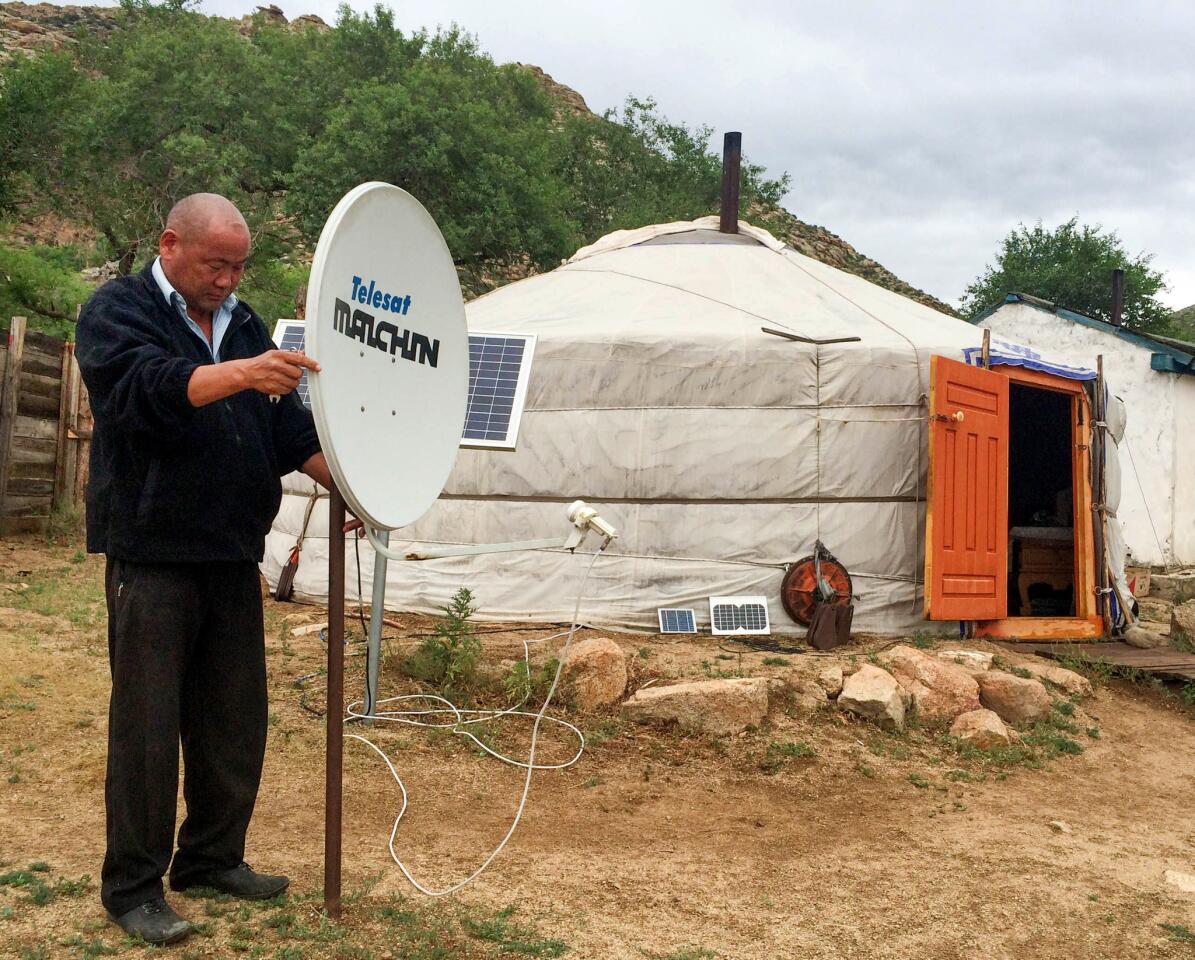
Tsagaana Davaa adjusts the solar-powered satellite dish outside his yurt in a remote part of Mongolia. He gets more than 60 stations, offering everything from “Breaking Bad” to Hollywood blockbusters.
(Julie Makinen / Los Angeles Times)Despite having just 3 million inhabitants scattered over an expanse about four times the size of California, Mongolia has 138 homegrown television stations — 80% of them founded in the last 10 years.
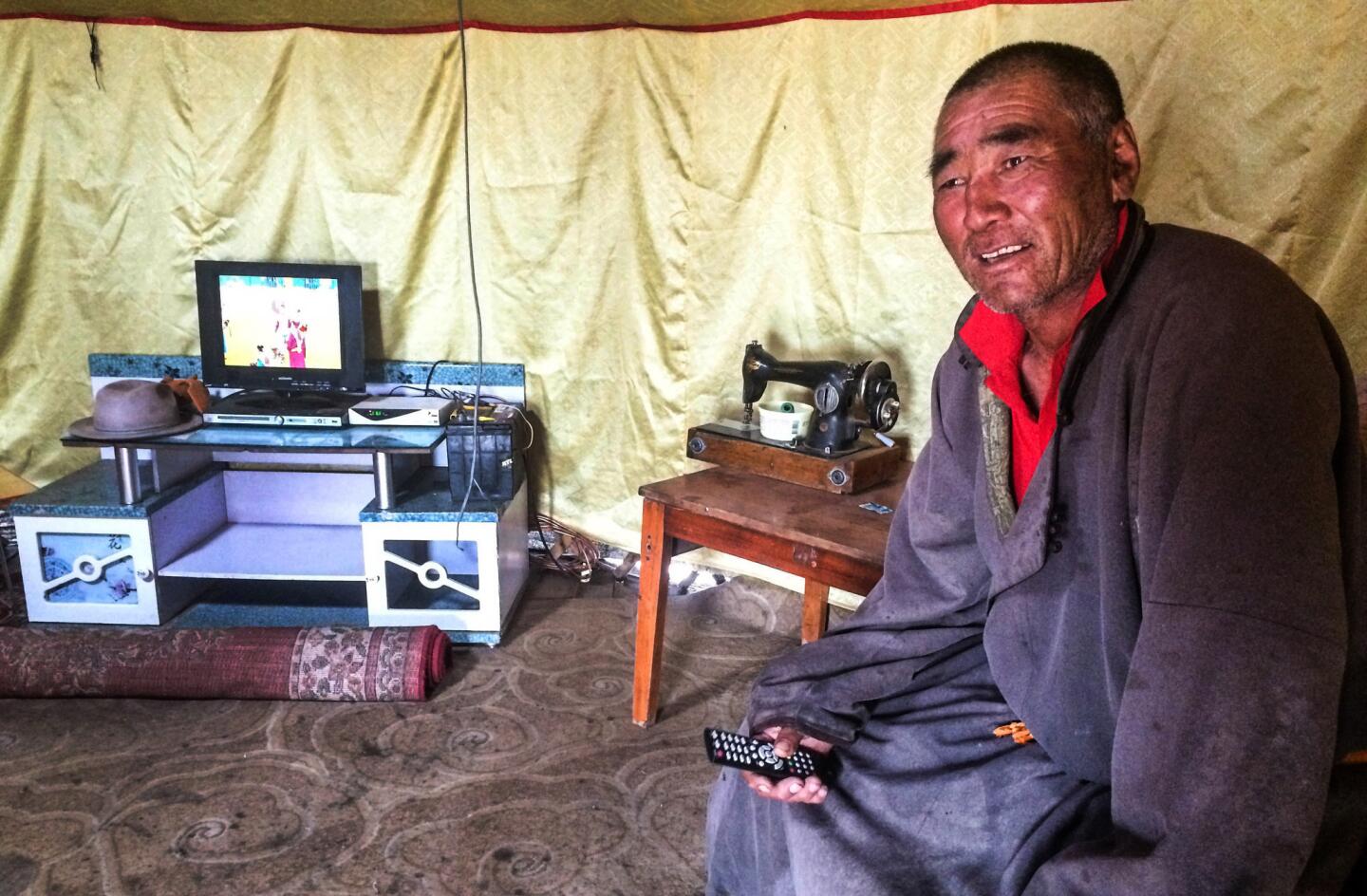
Enkhtaivan, who uses one name only, is a 59-year-old herder who lives a yurt near Ugii Nuur lake. He has had a TV for five years, and he gets programming via a solar-powered satellite dish.
(Julie Makinen / Los Angeles Times)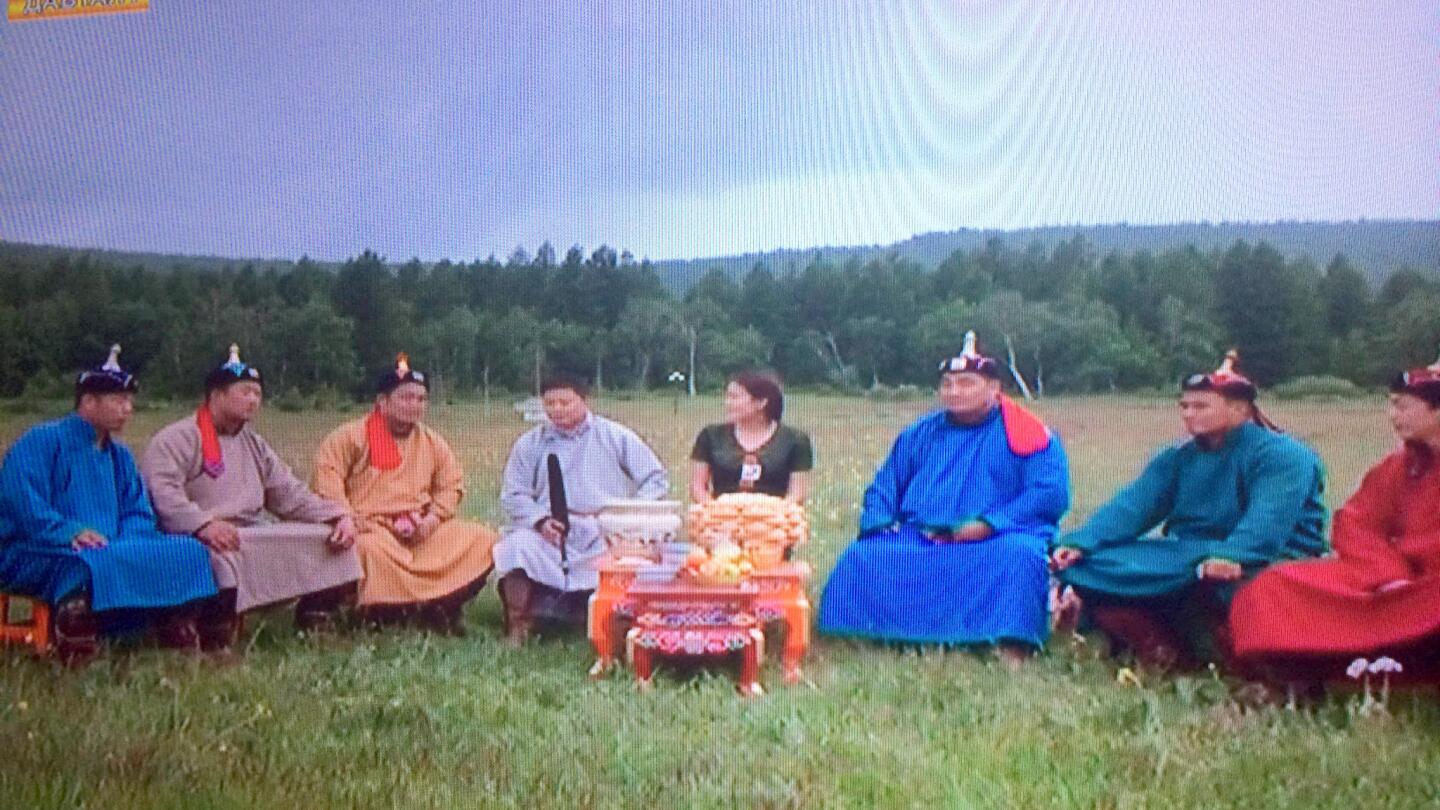
A screen grab of a Mongolian TV program.
(Julie Makinen / Los Angeles Times)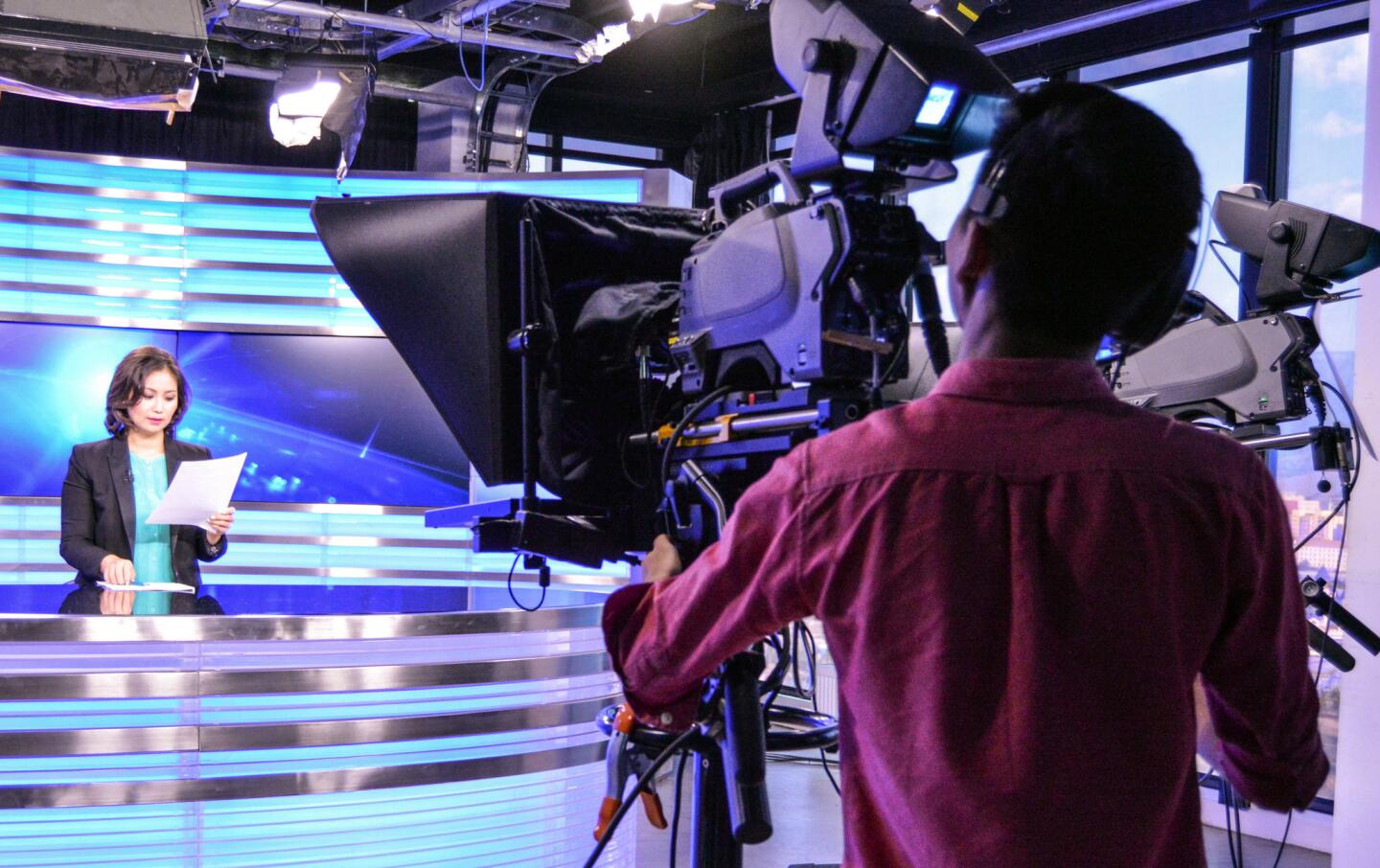
An anchorwoman at Mongol TV’s studios in Ulan Bator, the capital, gets ready for the evening news broadcast.
(Julie Makinen / Los Angeles Times)Advertisement
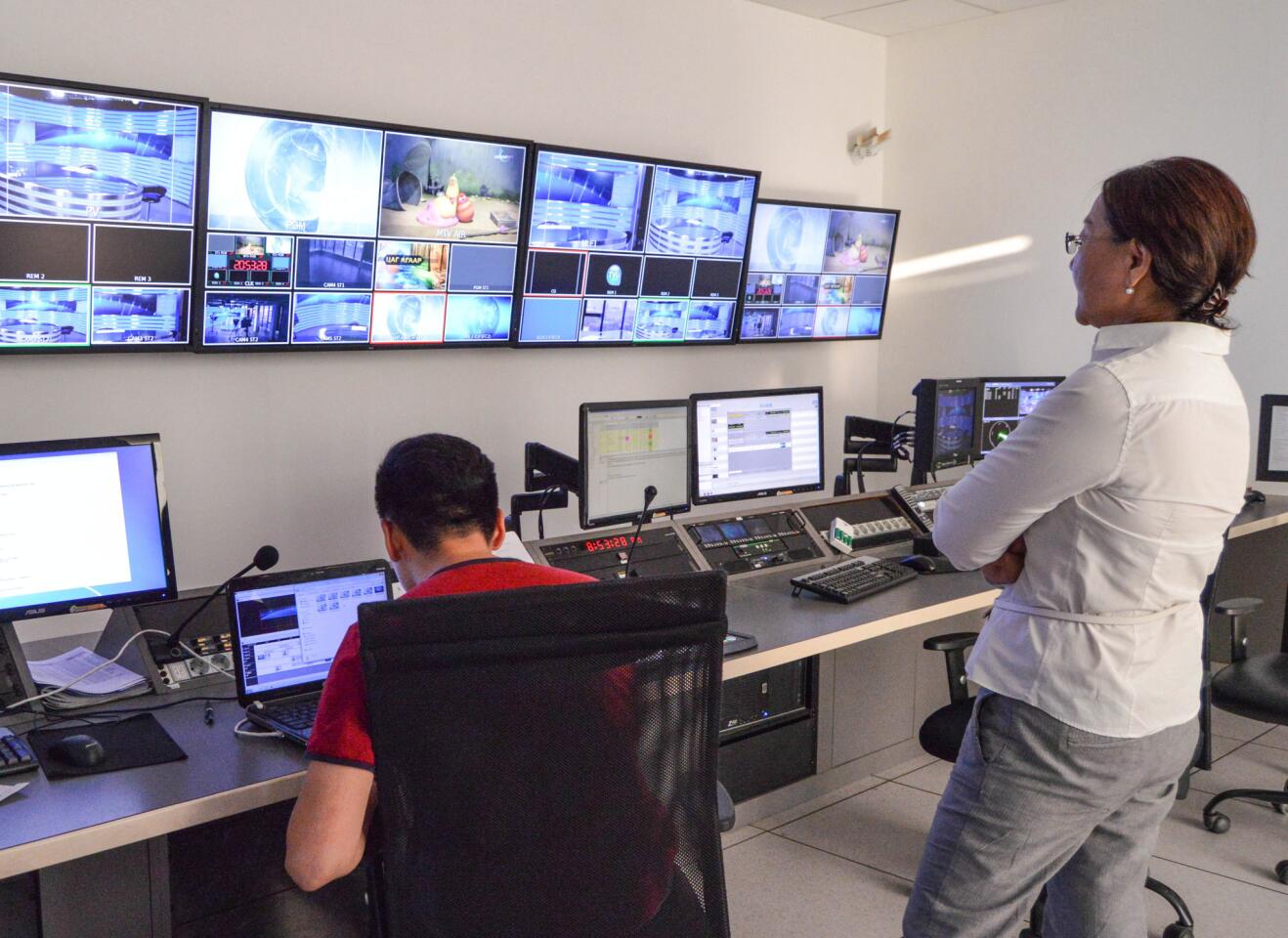
Workers at Mongol TV monitor a broadcast. Mongol TV, a private station launched in 2009, has been outspoken about bribery and piracy in the media.
(Julie Makinen / Los Angeles Times)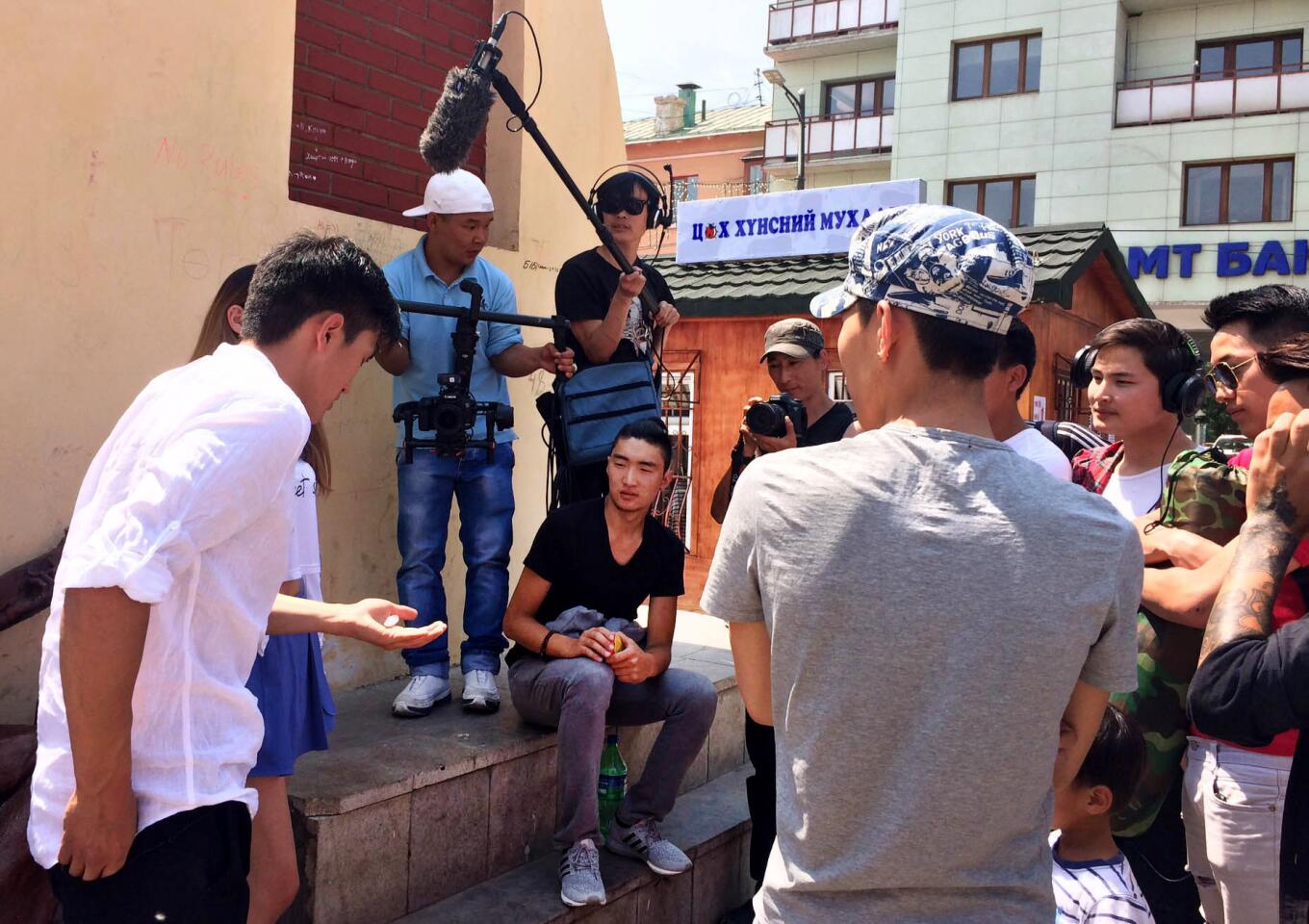
A TV crew films a program in downtown Ulan Bator.
(Julie Makinen / Los Angeles Times)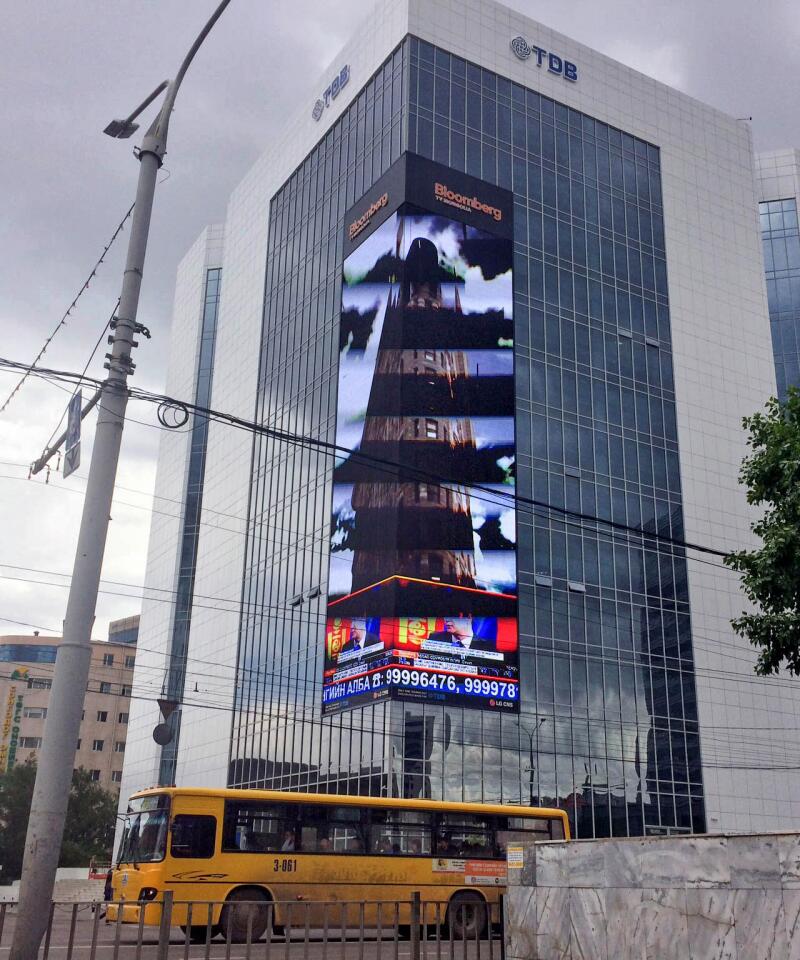
A video billboard for Bloomberg TV, which came to Mongolia several years ago.
(Julie Makinen / Los Angeles Times)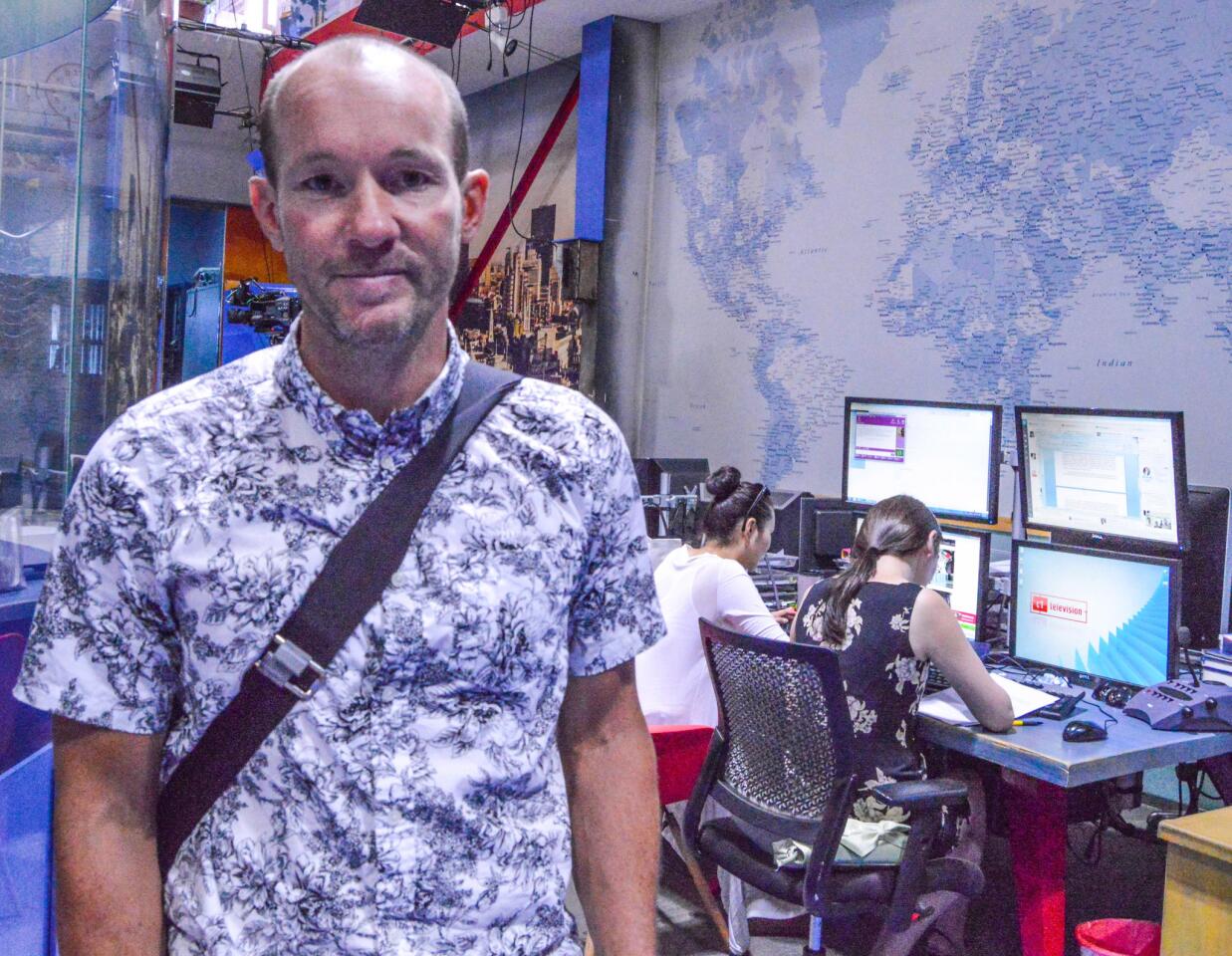
Ben Moyle, the former chief executive of Mongolia’s Channel One, says the network and others look to reality, news and variety shows, instead of dramas, to keep costs down.
(Julie Makinen / Los Angeles Times)Advertisement
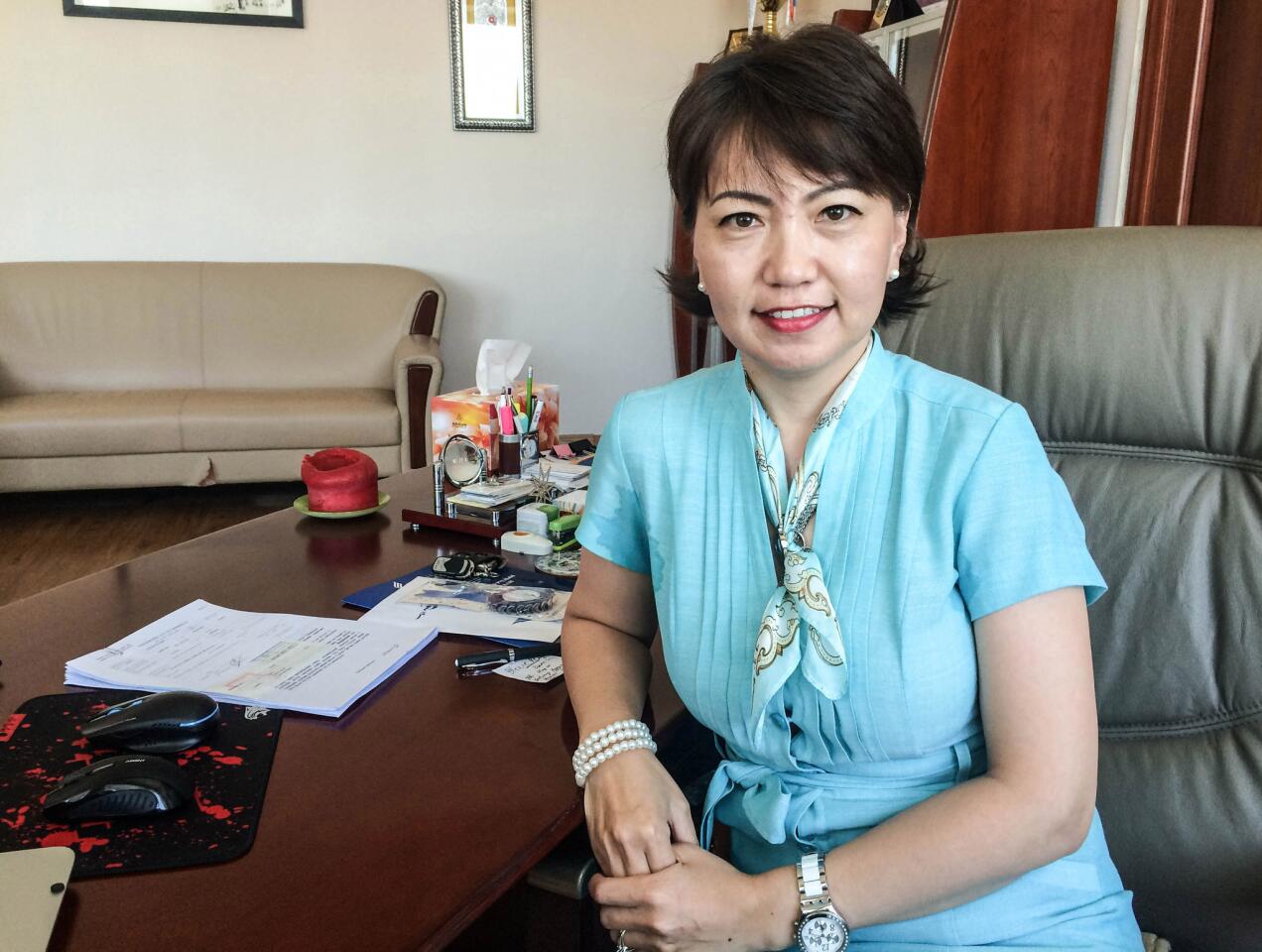
Oyundari Tsagaan, who earned her master’s degree in journalism at UC Berkeley, is general director of Mongolian National Public Radio and TV. She says politicians own TV stations so that they can have direct megaphones to reach the masses.
(Julie Makinen / Los Angeles Times)






